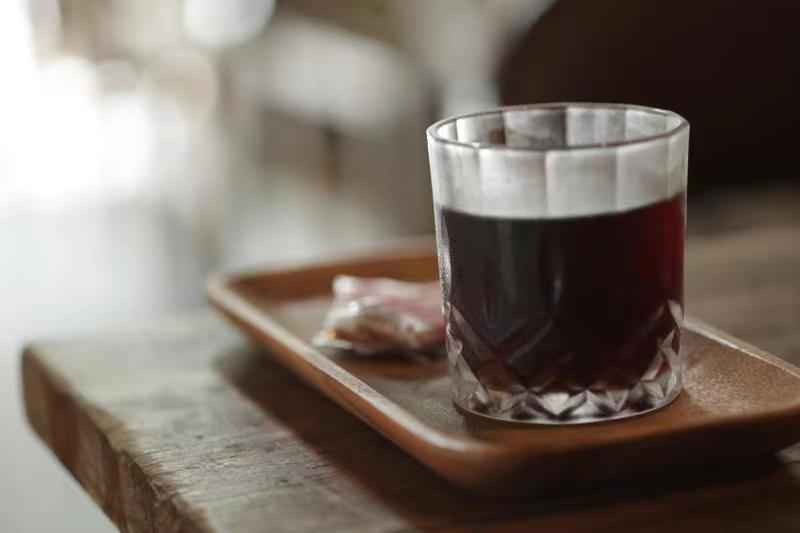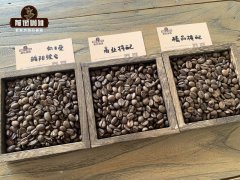How to choose coffee beans with low acidity? which coffee beans have lower acidity?
Without acidity, the taste of coffee will become dull and tasteless. Acidity is an ideal major coffee flavor sensation, which is considered to be the pleasant sharpness of the front of the mouth, the numbness of the tip of the tongue or the dryness of the back of the upper jaw and / or below the edge of the tongue; indicates the quality of the coffee.
Good acidity tends to be sweet, crisp and sour-enhancing other qualities of coffee. Coffee famous for its pleasant acidity includes AA of Kenya, Yegashefi of Ethiopia, Costa Rica and Nicaragua.
The acidity of coffee does not refer to the PH value, but one of the basic taste characteristics combined with mellow, aroma, sweetness, bitterness and aftertaste. Low acidity can cause coffee to become light or dull.
There are some effects on people with a fragile digestive system, including high-end coffee that can cause stomach acid reflux or stomach discomfort due to increased concentrations of healthy organic acids. Although people with a normal digestive system can handle wonderful acids (which are good for your health), there is still a market for low-acid coffee.
The best low-acid coffee
A good starting point for low-sour coffee is the origin. Although the amount of acidity varies (very large and very diverse) within a country, it provides a starting point for narrowing your choices. Some of the best low-sour coffee in the world come from: Brazil, Sumatra, Nicaragua
Coffee grown at low altitudes tends to produce less acid during growth, so it is the lowest acidity coffee. Dry (also known as "natural") processing also tends to lead to low acidity of coffee. Like the Brazilian coffee in front street coffee, Manning coffee, the acidity is relatively low.
The trade-off here is that coffee kicks will be less. Low-acidity coffee is usually looked down upon by coffee snobs, but since coffee is a personal experience, only your own opinion matters.
Acidity is generally thought to be good for coffee, providing brightness for flavor and enhancing other qualities. The organic acids in coffee have powerful antioxidant properties, which can bring some health benefits to coffee, but for some people, the pros and cons need to be weighed.

Baking degree with lower acidity
In addition to choosing low-sour coffee according to its origin (which varies even within a country), roasting can play a role in reducing the acidity of coffee. Organic acids usually come from coffee, and the longer they are roasted, the more acids are burned and removed from the coffee beans, so they can also be removed from brewed drinks.
Deeper baking is usually less acidic than shallow baking because organic acids are burned during baking.
The two main organic chemicals associated with stomach discomfort in coffee are N-alkanoly-5-hydroxytryptamides and catechol. On the other hand, some compounds, such as N-methylpyridinium (NMP), have been shown to help relieve stomach discomfort-the content of NMP found in deeper baking is higher than that in shallow baking.
Effect of cold extraction on low acidity
Because coffee is extracted at a low temperature within hours, cold-extracted coffee tends to work well for people who are sensitive to coffee. Higher temperatures are needed to extract some acidic compounds from coffee, and these higher temperatures are not found during cold brewing. In a broad sense, deeper baking is also best for cold brewing, which further reduces acidity.
Decaffeinated coffee is good for low acid.
The process used to extract caffeine also extracts many other naturally occurring compounds in raw coffee. No matter how they decaf-Swiss water, carbon dioxide, other solvents-they don't just lose caffeine, caffeine lowers other acids.
Although any decaffeinated method will remove some "healthy" compounds, none of them will make coffee unhealthy. A common misconception is that solvents are not as healthy as carbon dioxide or Swiss water, but they burn off at much lower temperatures than roasted coffee, leaving no traces of compounds in the final roasted coffee.
Important Notice :
前街咖啡 FrontStreet Coffee has moved to new addredd:
FrontStreet Coffee Address: 315,Donghua East Road,GuangZhou
Tel:020 38364473
- Prev

The difference between coffee beans and espresso beans the deeper the espresso beans are roasted, the better?
In the coffee we drink, are the coffee beans the same? is there still any difference? the hand-brewed coffee we drink is fine coffee beans, and so is the espresso? Yes, there is a difference between coffee beans and espresso beans! They're not the same thing! To make espresso, you can use any coffee beans you like. After all, espresso is just another brewing method. But this
- Next

How to make coffee ice cubes cold extracted coffee and iced coffee do you need coffee ice cubes
When making iced coffee or other frozen drinks in summer, regular ice cubes can thaw and dilute the coffee to make it taste like water. If you want to drink a cup of thick iced coffee without losing the flavor of the coffee, then coffee ice is the best solution. Yes, Qianjie Coffee suggests a simple solution, just do some preparatory work: make good coffee ice cubes, coffee
Related
- What brand of black coffee is the most authentic and delicious? what are the characteristics of the flavor of the authentic Rose Summer Black Coffee?
- Introduction to the principle and characteristics of the correct use of mocha pot A detailed course of mocha pot brewing coffee is described in five steps.
- Which is better, decaf or regular coffee? how is decaf made?
- How much is a bag of four cat coffee?
- How about four Cat Coffee or Nestle Coffee? why is it a cheap scam?
- Which is better, Yunnan four Cats Coffee or Nestle Coffee? How about cat coffee? is it a fake scam? why is it so cheap?
- How about Cat Coffee? what grade is a hoax? which instant coffee tastes better, four Cat Coffee, Nestle Coffee or G7 coffee?
- Process flow chart of coffee making-Starbucks coffee making process what coffee tastes good at Starbucks
- The top ten best coffee beans in the world Rose summer coffee or Tanzanian coffee tastes good
- Yunnan four cat coffee is good to drink?_four cat coffee is a big brand? four cat blue mountain coffee is fake?

